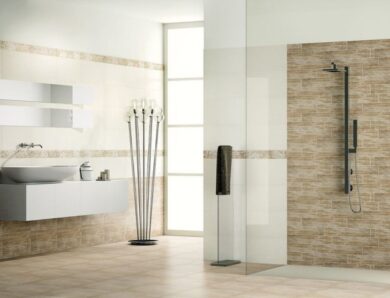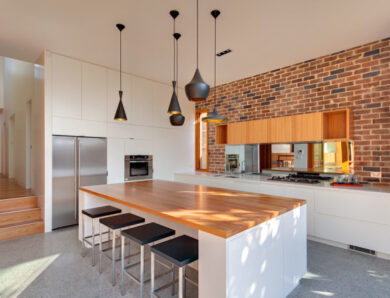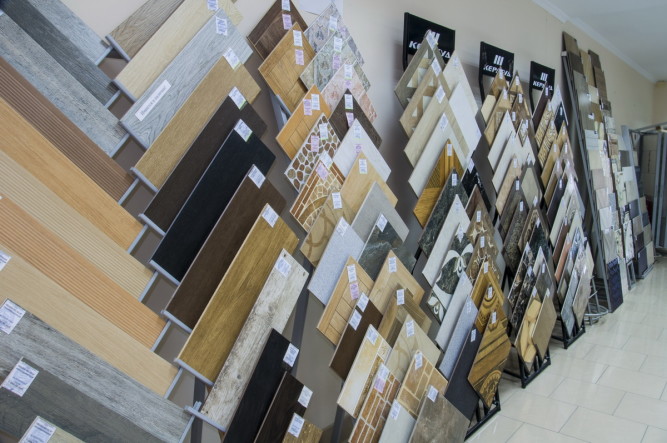Thickness of tile adhesive: maximum and minimum
Determining the thickness of the tile adhesive when laying on the floor or wall is one of the main tasks when planning the finish. It is important to consider many factors: material type, example, porcelain or ordinary tile, its dimensions, surface quality, etc.. D. Let's find out, what is the thickness of the solution is considered optimal in a given case.
The thickness of the adhesive is important when laying tiles
Features of adhesive compositions
The thickness of the layer of adhesive mixture for tile or porcelain can vary dramatically. Of course, the key factor here will be the facing material used and its individual features, but much also depends on the adhesive composition itself.
There are three main types of tile adhesive:
- Cement. Standard dry mix of Portland cement, sand and modifying additives with plasticizers. An alternative is a homemade cement mortar, sand and slaked lime. At the same time to work with such glue is quite simple and convenient.
- Two-component. These are mainly epoxy compositions, which include epoxy resin and catalyst. A sticky glue comes out, which provides effective adhesion of surfaces at the minimum expenses of mix.
- Dispersion one-component. It is a ready to use mixture, which mainly consist of Smolny components of one type or another. Can also be based on polymer components, example, latex.
Varieties of adhesive compositions for tiles
When applying the cement mortar will need a larger layer compared to other types of mixtures, but the material itself has a lower cost, which allows you to compensate for its high cost.
Maximum and minimum values
The thickness of the adhesive layer can vary during the laying of tiles, however, there are some limitations in this regard. To tile, especially porcelain, was securely fixed on the surface it is important to adhere to the minimum and maximum limits.
Minimum thickness of glue, which is applied when laying tiles, calculated individually depending on the format of the tile. In general, for small products it is not recommended to make the layer smaller 2 mm. If the tile is heavy and has significant dimensions, as, example, porcelain for the floor, the lower limit can be adjusted to 4-5 mm.
Now let's consider, what should be the maximum layer thickness of standard tile adhesive. The increase in the amount of mortar is often associated with attempts to level the facing surface without the use of additional materials and screed. In this case, it is necessary to note all the irregularities on the surface and bring the minimum layer of glue under the highest point. Depressions and pits will be filled with solution. At the same time it is not necessary to make a layer thicker 10 mm for ordinary wall tiles, 15 mm for floor, and porcelain can be put on glue up to 20-22 mm. Further increase in the amount of mixture will lead to poor adhesion, as well as irrational costs.
The thickness of the tile adhesive will depend on the tile used and the structure of the adhesive itself
Calculation of the required amount
To determine the thickness of the tile adhesive, example, under porcelain and the mass of the required mixture, necessary, focusing on available data, perform calculations in several stages:
- Determine the dimensions of your tile and choose the appropriate thickness of the solution for it, taking into account the quality of the facing.
- On the pack with the mixture for the solution should be indicated, how many kilograms of material is based on 1 square meter with a layer thickness of 1 millimeter.
- Multiply these two numbers, and you will get an intermediate result - how much mixture you need for facing 1 square meter area.
- Then calculate the total size of the facing area.
- Multiply the first result by the total number of square meters.
- To ensure that you always have a stock of the mixture in case of errors in calculations or force majeure in the process of laying, multiply the last result by 1,1. So, you add to the estimated amount of mixture 10 reserve interest.
When calculating the thickness of the adhesive must take into account the dimensions of the tile and the surface area, facing
Rules for applying the solution
Purchase powder adhesives are most often used in repairs. In order for them to acquire their properties before use, the mixture must be diluted with water according to the instructions. At the same time it is not necessary to add all volume of liquid at once, it is recommended to knead a thicker mixture first, and then dilute it as needed. After that, leave the solution to infuse for about 10-15 minutes for that, that all components bond well with each other and form a quality adhesive mass.
For the most effective distribution of the adhesive mixture on the surface using a notched trowel. The tool number indicates the size of its teeth, the more tiles, the larger they should be. It is recommended to apply the glue directly on the walls or floor. If you want to remove inequalities, then you can additionally lubricate the tile itself. A small small spatula is used as an auxiliary tool.
For uniform distribution of tile glue it is recommended to put it by means of a gear spatula
To make the glue stick better to the tile and the surface, it is recommended to pre-soak them in water and dry them. Keep in mind, that porcelain practically does not absorb water.
Laying tiles on the walls
Consider, how to properly apply the solution to the walls. For a standard wall tile, the thickness of the tile adhesive should be approx 4-5 mm. In order to perform its installation correctly, it is necessary to level corners at first and to smooth out the basic roughnesses by means of plaster.
Laying is best started from the bottom of the second row. Its position should be calculated as follows, that as a result all top rows consisted only of integral elements, excluding extreme tiles.
Laying tiles on the walls is done from the bottom up, the thickness of the adhesive for standard wall tiles is 4-5 mm
Glue is applied to the wall itself, the cultivated area should not take up more, than the size of three or four cladding elements. If you need to line hard-to-reach places, example, corner zones, it is best to spread the glue on the tile itself, so that you can evenly distribute the grooves on it.
To adjust the thickness of the mortar layer, gently press and tap the tile. After that seams are exposed, the level is checked and all surpluses are removed.
Laying floor tiles
When laying floor tiles or porcelain requires a large thickness of tile adhesive. Work must start from the far corner, moving towards the exit, so as not to break the masonry. Glue is applied to the floor with a larger notched trowel. This is due to the fact, that most often on a floor more dimensional and thicker tile is mounted, and more significant irregularities remain on such a surface. If the differences are noticeable, it is best to pour screed on the floor in advance.
A thicker layer of glue is required to lay the tiles on the floor
A layer of glue when laying porcelain, usually, thicker, than for ordinary tiles. The point is, that the density and weight of this material is greater, so, it also puts a heavy load on the solution.
After you place the tile on the floor, you need to adjust its position and expel the voids from under it.. To do this, use a rubber mallet. Since the glue is partially compacted and will spread under the tile, you can first apply a thicker layer on the floor, you can choose the excess with a spatula from the joints after the final fixing of the element.
Properly selected thickness of the mortar layer will not only allow you to facilitate the laying process, but also make the surface stronger for further use.



